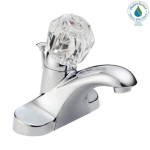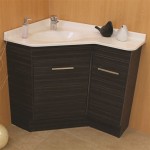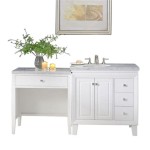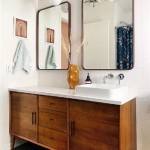Bathroom Sink Storage Vanity Unit: A Comprehensive Guide
The bathroom sink storage vanity unit is a fundamental element in modern bathroom design, providing a dual purpose: a functional washbasin and valuable storage space. These units combine the aesthetic appeal of a vanity with the practicality of concealed storage, contributing to a more organized and visually appealing bathroom environment. This article will offer a comprehensive overview of bathroom sink storage vanity units, exploring their different types, materials, design considerations, installation aspects, and maintenance tips.
Types of Bathroom Sink Storage Vanity Units
Bathroom sink storage vanity units are available in a diverse range of styles and configurations to suit varying bathroom sizes, design preferences, and storage needs. Understanding the various types can aid in selecting the most appropriate unit for a specific bathroom space.
Freestanding Vanity Units: These are the most common type of vanity unit. They stand independently on the floor, offering ease of installation and flexibility in placement. Freestanding units are available in various sizes and styles, ranging from traditional to contemporary designs. They typically provide ample storage space in the form of cabinets, drawers, or a combination of both. The accessibility makes them ideal for straightforward renovations or new builds where minimizing installation complexity is a priority.
Wall-Mounted Vanity Units: Also known as floating vanities, these units are attached directly to the bathroom wall, leaving the floor space beneath them clear. This design creates an open and airy feel, making the bathroom appear larger. Wall-mounted units are particularly suitable for smaller bathrooms or those with modern, minimalist aesthetics. They also simplify floor cleaning and can be installed at a customized height for accessibility. However, installation requires careful consideration of wall reinforcement to support the weight of the unit.
Corner Vanity Units: Designed to fit snugly into a corner of the bathroom, these units are excellent space-savers. They maximize the use of otherwise underutilized areas, making them ideal for compact bathrooms or powder rooms. Corner vanities come in various styles, often featuring a triangular or curved sink and storage space that conforms to the corner shape. The specialized design contributes to efficient space utilization without compromising functionality.
Double Sink Vanity Units: These units feature two sinks, providing separate washing stations for multiple users. Double sink vanities are particularly useful in master bathrooms or shared bathrooms, promoting convenience and reducing congestion during peak usage times. They typically offer a larger countertop area and more extensive storage space than single sink vanities, accommodating the needs of two individuals. The increased size requires careful planning of bathroom layout and dimensions.
Vanity Units with Integrated Sinks: In this type, the sink is seamlessly integrated into the vanity countertop, creating a smooth and unified appearance. Integrated sinks are often made from materials such as solid surface, cast polymer, or vitreous china, offering durability and ease of cleaning. The seamless design minimizes the risk of leaks and eliminates the need for a separate sink installation. These units contribute to a sleek, modern aesthetic.
Materials and Construction
The materials used in the construction of a bathroom sink storage vanity unit significantly impact its durability, aesthetic appeal, and resistance to moisture and humidity. Choosing the right materials is crucial for ensuring the longevity and performance of the unit in the challenging bathroom environment.
Wood: Solid wood, such as oak, maple, or cherry, offers a classic and durable option for vanity construction. Solid wood vanities provide a natural warmth and beauty, but they require proper sealing and finishing to protect against moisture damage. Engineered wood products, such as plywood or MDF (Medium-Density Fiberboard), are often used as a more economical alternative to solid wood. These materials are less prone to warping and cracking, making them suitable for bathroom applications, especially when properly sealed with water-resistant coatings.
Laminate: Laminate is a synthetic material consisting of several layers of paper or fabric impregnated with resin and bonded to a substrate. Laminate vanities are available in a wide variety of colors, patterns, and textures, offering versatility in design. They are relatively inexpensive, easy to clean, and resistant to scratches and stains. However, laminate can be susceptible to water damage if the edges or seams are not properly sealed. High-pressure laminate (HPL) is a more durable option compared to low-pressure laminate (LPL).
Melamine: Melamine is a thermosetting plastic that is applied to a substrate, typically particleboard or MDF. Melamine vanities are similar to laminate vanities in terms of cost and ease of cleaning. They offer a smooth, consistent surface and are available in various colors and patterns. Melamine is less resistant to scratches and impacts compared to laminate, making it more suitable for lower-traffic bathrooms.
Stone: Natural stone, such as granite, marble, or quartz, is a luxurious and durable option for vanity countertops. Stone countertops are heat-resistant, scratch-resistant, and easy to clean. Each slab of natural stone is unique, offering a distinct and elegant appearance. Engineered stone, such as quartz, provides a more consistent color and pattern compared to natural stone and is less porous, making it more resistant to staining. Stone countertops require regular sealing to prevent water absorption and staining.
Solid Surface: Solid surface materials, such as Corian or Swanstone, are non-porous and seamless, making them highly resistant to water damage and staining. Solid surface vanities are easy to clean and maintain, and they can be repaired if scratched or damaged. They are available in a wide range of colors and patterns, and they can be molded into various shapes and designs. Solid surface materials offer a hygienic and durable option for bathroom vanity countertops.
Metal: Metal vanities, typically made of stainless steel or powder-coated steel, offer a modern and industrial aesthetic. Metal vanities are durable, rust-resistant, and easy to clean. They are often used in commercial bathrooms or contemporary residential bathrooms. Metal vanities can be combined with other materials, such as glass or wood, to create a unique and stylish look.
Design Considerations and Installation
Selecting and installing a bathroom sink storage vanity unit involves careful consideration of several factors, including the bathroom's dimensions, the unit's style and functionality, and the plumbing and electrical requirements. Proper planning and installation are essential for ensuring the unit's performance and longevity.
Bathroom Dimensions and Layout: Before selecting a vanity unit, accurately measure the available space in the bathroom. Consider the existing plumbing and electrical locations, as well as the placement of other fixtures, such as the toilet and shower. Ensure that the vanity unit does not obstruct doorways or walkways and that there is adequate clearance for opening cabinet doors and drawers.
Style and Aesthetic: Choose a vanity unit that complements the overall style and aesthetic of the bathroom. Consider the color, finish, and hardware of the unit, as well as its shape and design. A contemporary bathroom may benefit from a sleek, wall-mounted vanity with clean lines, while a traditional bathroom may be better suited to a freestanding vanity with ornate details.
Storage Needs: Assess the storage needs of the bathroom and choose a vanity unit that provides adequate space for storing toiletries, towels, and other bathroom essentials. Consider the number of drawers, cabinets, and shelves, as well as their configuration. A vanity unit with adjustable shelves can provide greater flexibility in storage.
Plumbing and Electrical Requirements: Ensure that the vanity unit is compatible with the existing plumbing and electrical systems. Check the location of the water supply lines, drainpipe, and electrical outlet. If necessary, hire a qualified plumber and electrician to make any necessary modifications. Pay attention to the drain assembly and ensure it fits properly with the sink and drainpipe to prevent leaks.
Installation Process: The installation process will vary depending on the type of vanity unit. Freestanding vanities are typically easier to install than wall-mounted vanities, which require careful mounting to the wall studs. Follow the manufacturer's instructions carefully and use appropriate tools and materials. Ensure that the vanity unit is level and securely fastened to the floor or wall. Hiring a professional installer can ensure a proper and safe installation.
Accessibility Considerations: For individuals with mobility issues, consider a vanity unit that meets accessibility standards. This may include a wall-mounted vanity with knee space underneath or a vanity with lever-style handles. Ensure that the sink and countertop are at a comfortable height and that there is ample clearance for maneuvering a wheelchair or other mobility device.
By carefully considering these design and installation factors, individuals can select and install a bathroom sink storage vanity unit that meets their specific needs and enhances the functionality and aesthetics of their bathroom.

Top 5 Under The Sink Storage Vanities Victorian Plumbing

High Quality Vanity Units For Your Bathroom Bathrooms

Elegant Bathroom Vanity Unit Basin Sink Storage Wall Hung Cabinet Gloss Grey

Kleankin Bathroom Sink Cabinet Freestanding Under White Diy At B Q

800mm Bathroom Vanity Unit Freestanding 80cm Sink Cabinet Basin Oak Effect Storage Classic Diy At B Q

Bathroom Wall Hung Vanity Unit Sink Cabinet Wash Basin Storage Drawer 1100

1500mm Bathroom Suite Victorian Plumbing

Under Sink Storage Ideas For Your Home Designcafe

Elegant Wall Mounted White Bathroom Vanity Unit And Sink Basin Home Furniture

Bathroom With Internal Draw Sensor Bottom Light Anthracite Tapron Co
Related Posts







